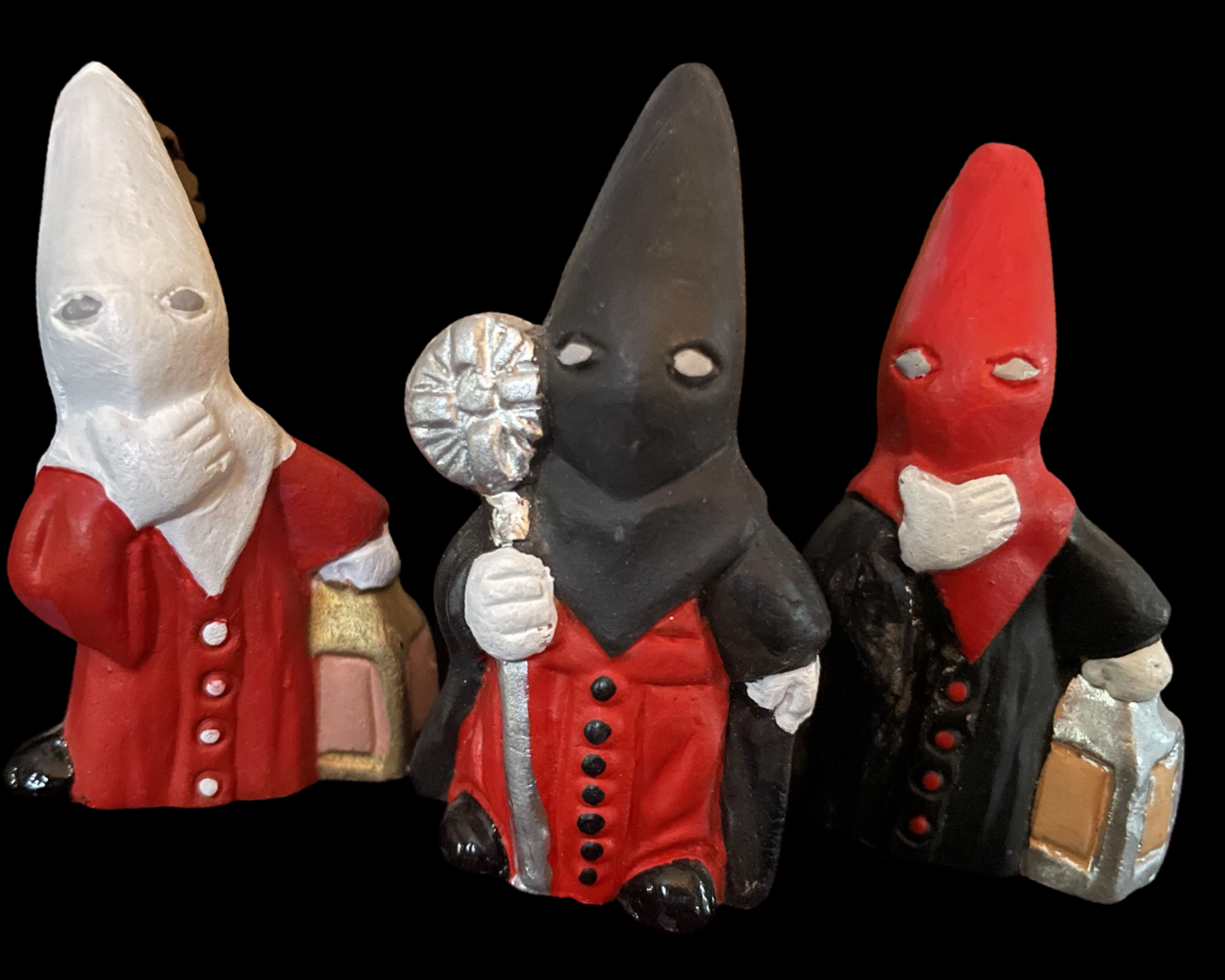The Hooded Nazarenes of Spain
Exploring a Misunderstood Holy Week Ritual
In advance of Holy Week, which begins each year on the Sunday before Easter (Palm Sunday), we will explore the phenomenon of the Nazarenes (Nazarenos) — hooded penitents that are sometimes mistaken for members of the Ku Klux Klan.
Image depicts nazarenos (penitents) from the Brotherhood of Mount Zion during Holy Week in Seville, Spain. Source: Bibliothèque nationale de France, département Estampes et photographie, EI-13 (1695)
The origin of the Nazarene tradition in Spain is rooted in the medieval religious practices of self-mortification and penance. The participants in these processions often carry wooden crosses, rosaries, candles and other religious symbols, and some even walk barefoot as a sign of their devotion. In the modern context, the Nazarenos are typically members of religious brotherhoods or fraternal organizations that organize the Holy Week processions in their local communities. (See photos of signs below.)
The robes worn by the Nazarenos are usually made of rough materials such as burlap or wool. White and black are the most common, but other colors are worn on occasion. The cone-shaped hoods have eyeholes that enable the penitents to see where they are going, but obscure their faces from onlookers. The overall effect is one of solemnity and anonymity, emphasizing the penitential nature of the procession and the humility of the participants.
While Nazarenos are a distinctly Spanish phenomenon, similar traditions can be found in other predominantly Catholic countries, such as Portugal and Italy. (See photos below.)
Is there a connection or common origin between these hooded Nazarenes and the Ku Klux Klan?
As far as The House can tell, there is no connection between the hoods worn by the Nazarenos and the hoods worn by members of the Ku Klux Klan, except that on a superficial level both are meant to conceal one’s identity. But of course, misperceptions can occur and intent can be misconstrued when cultures come into contact without a thorough understanding of each other’s traditions.
Some tourists who are not familiar with Spanish customs perceive the hooded figurines sold around the Easter holiday as KKK-related memorabilia. This common misperception has caused shopkeepers in Spain to post signs clarifying the meaning of the figures in an effort to avoid misunderstandings and uncomfortable questions.
The House has collected a small group of Nazarene figures over the years. These terracotta figurines — sometimes referred to as “Mud People” — are popular souvenirs from Spain. They depict a wide variety of characters and professions, such as futbol players, matadors, Santa Claus, priests, musicians and flamenco dancers, but some of the most popular are the Nazarenos (and the Caganer).
***
Nazarene figures in a variety of colored robes and hoods, The House of Good Fortune Collection.
Terracotta Nazarene figurines in a variety of robes and hoods (and varying degrees of realism); The House of Good Fortune Collection.
Below are some beautiful photos from a book called “Lugares de Evocação,” (Places of Evocation) published by the Museu da Imagem in Brazil. The book features the work of four photographers — Christian Bellavia; Pedro Negreiros; Fernanda Carvalho; and Ricard Terre — who documented Holy Week activities in Spain and Portugal in the 1990s.
***
Lugares de Evocação, Museu da Imagem
Fernanda Carvalho, Semana Santa, Sevilha, 1996
Christian Bellavia, Saugues, 1995
Fernanda Carvalho, Semana Santa, Sevilha, 1996
Ricard Terre, Braga, 1991
Nazareno figurine, collected in Barcelona, Spain, The House of Good Fortune Collection.
2025 UPDATE
On a recent visit to Naples, The House observed numerous historical and contemporary depictions of Neapolitan penitents and their processions. Naples was part of the kingdom of Spain during the 16th and 18th centuries, and its traditions and language have been influenced accordingly.
Poster advertising a procession by the Arciconfraternita di S. Monica on Good Friday in Sorrento, Italy
Poster advertising a procession by the Arciconfraternita del S.S. Rosario on Holy Thursday in Sorrento, Italy
Detail from image above
Hooded penitent posed in the Chiesa di Santa Luciella in Napoli
Detail from image above
Hooded penitent posed in the Chiesa di Santa Luciella in Napoli
Depiction of a funeral procession for plague victims, as displayed in the Museo di Arti Sanitarie agli Incurabili in Napoli
















